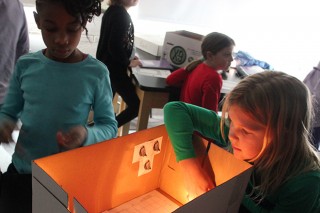Think of a school as a colorful tapestry. Look closely and you will see the beautiful repeating threads of art and music in the students’ daily experiences. In a 21st century school, technology is another vibrant thread; it is a medium for innovation as students tap both their imaginations and their problem-solving skills. Dr. Loretta Jackson-Haye of Rhodes College said it perfectly: “Our culture has drawn an artificial line between art and science, one that did not exist for innovators like Leonardo da Vinci and Steve Jobs.” At our school, Akiva in Nashville, part of our mission is to erase the artificial line by empowering students to create art through contemporary technology.
Stop Motion Animation is used in art to encourage students to create and problem-solve. For years, Stop Motion Animation has been used by motion picture studios to create films such as Gumby of the 50s and 60s to more recent movies such as Coraline. Stop Motion Animation is now accessible to students through the use of iPad applications. It is a process that makes inanimate objects appear to move without help. The secret, however, is that objects are moved by an outside force in small increments between individually photographed frames. When the frames are played in sequence, the illusion of movement is created.
In art class, students use Stop Motion Animation to produce mini-movies. Working in partnerships, students are assigned the task of creating a three-minute film using clay. One partner serves as the director, physically remolding the clay and moving the figures. The other serves as the filmmaker shooting each individual frame. Students have to think critically about structure, flow and timing to create the stories they are interested in sharing, and these mini-movies become a fun, zany, surreal opportunity for creative expression. Click here for rest of article: http://www.akivanashville.net/news/the-tapestry-of-art-and-science/



